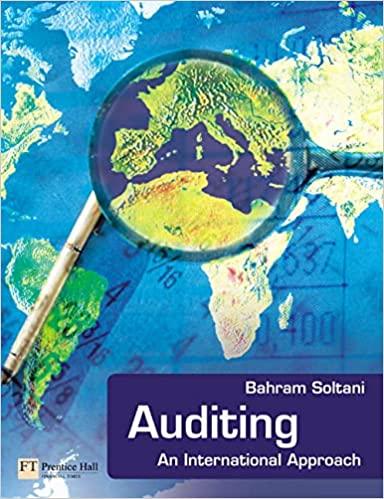Case Study Question 1

1. What process improvement(s) would ht(s) would you suggest to increase capacity and process efficiency? Provide a canar de a capacity and utilization d utilization analysis for the improved system. Employees who gave the super-relaxante t ant or provided other beauty care eamed K$ per hour. There were two siyo chifts per day. Each institute also had people in charge of warehouse stock and turn ople per shift in charge of deaning, all of whom earned R$600 per month. In addition three people per shift worked at the sales counter at each institute; they eamed R$10 per hour. The entire staff received cartate and lunch-which cost R$12 per day per employee-and a vear-end bonus, all those who worked directly with customers (including sales staff) received R$950, and warehouse and cleaning employees received R$600. THE PROCESS When a client entered an institute, she took a number and proceeded to the front desk (see Exhibit 10 for an example of an institute layout). The receptionist then welcomed her, asked if she had been to a Beleza Natural institute before, and processed her payment; the super- relaxante treatment cost R$65. Taking the client's ticket and payment took two minutes. Before proceeding with the super-relaxante treatment, new customers (who represented 10% of all clients) had to have a hair evaluation given by an employee trained in that procedure. When a client's hair was too damaged from a previous coloring treatment, she could not begin the super-relaxante treatment immediately. Instead, she had to have a hair recovery treatment at the hydration station and then return to the institute in a month, after having used Beleza Natural products at home during that period. Ninety percent of those who could not have the super-relaxante treatment right away chose to have the hair recovery treatment and then wait as required. The employee who performed the hair evaluation also explained the whole process to the client and told her about all the products that were available for home use. The evaluation usually took 10 to 15 minutes. Next, an employee checked to see that the client had made her payment before entering the salon section. Then the client proceeded to the first step of the super-relaxante treatment, the division process. Depending on the length of the client's hair and how tangled it was, the division process took from 10 to 15 minutes. Next the client was given the super-relaxante treatment itself; the patented Beleza Natural products were applied, creating smooth hair and well-defined curls. The super-relaxante process took 40 minutes on average, but it could take as little as 25 minutes or as much as an hour, depending on the client's hair type and the consultora de beleza's skills. After a client left the super-relaxante station, she went to the hydration station to have her hair shampooed and conditioned, which took an average of eight minutes per client. Last of all, the client had her hair dried and tested, which could include having it cut and/or colored. Twenty-five percent of dients had their hair cut, which took an average of 10 minutes. Coloring took an average of 45 minutes, although the hairdresser spent only 15 minutes with the customer, who then usia 30 minutes more for the dye to set. Only 10% of customers chose to have their hair colored. While the client had her hair dried and styled, wuch took 10 minutes on average, the auxiliar also told her how to comb her hair at home. Once the treatment was finished, customers could buy monthly maintenance products at the sales counter, located right next to the styling station. Sixty-five percent of customers who received the super-relaxante treatment bought beauty care products at the institute before leaving. The average basket value of the products was R$40, with a margin of 50%. Exhibit 11 shows the number of emplovees at each station of the super-relaxante process; Exhibit 12 shows the observed demand for each institute. On average, the products used during the super-relaxante treatment cost R$4 per customer; the institutes received supplies of products once a week. Exhibit 13 shows other costs related to the operation of the institutes. Velez commented, "Many different factors had to be dealt with as we worked to streamline our process so that we could accommodate more customers." Click here to watch Velez discuss operations management issues in her growing company. The conjunction of weekly and seasonal patterns of demand along with Brazil's inflexible labor laws made implementing the necessary operational changes a challenge: if Beleza hired additional staff to meet the high demand on weekends, the company would end up having to pay salaries to employees who would be idle for most of the week. "And even though not all of our employees perform equally well," she said, "they are all highly skilled -particularly the consultoras de beleza, who receive special training in the super-relaxante treatment. We need to bear in mind that hiring additional staff means having to invest in more training." Workforce management was only one among a host of potential issues identified. While Velez and the rest of the management team well understood the issues and had ideas for potential fixes, they did not necessarily agree on where they should start. What impact would improvement measures have on Beleza Natural's operations and and how should the team prioritize these measures? Mon-Thu 293 Fri 396 Sat 513 This is for Madureira Total workers Activity time (min) # workers Capacity (cust'hr] Cycle time [min] Process capacity (cust/hr] Reception Division Super Hydration Hairstyle Relaxing I 12.5 40 8 14 8 18 4 9 6038.4 273039 + 2.22 B Demand rate (Saturday] Flow rate (cust/hr Utilization 27 45% 70% 100% 90% 70% Demand rate (Friday) Flow rate (custhr] Utilization 70% 100% 90% 70% Demand rate mon-thu) Flow rate cusuhr Utilization 41% 64% 90% 81% 63% Flow rate per week Average utilization per week Avg Labor util 1820 42% 8.6% 7 66% 94% 84% 66%










